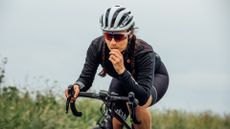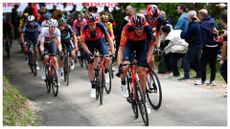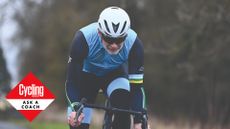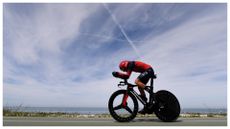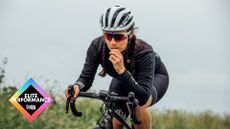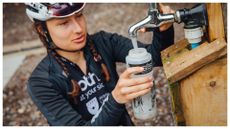九为骑自行车的人最好的补品:专家recommendations for boosting your performance
If just eating a healthy, balanced diet doesn't feel like enough, here's a look at some additional supplements which could increase your performance...


After a few years of riding, most cyclists have got their heads around the what, how and when ofcycling nutrition– but when it comes to supplements there’s a lot of confusion. With numerous stories of 'accidental' doping and concern over side effects (even if they’re felt only in the wallet), it's understandable that cyclists are wary.
There's a wide array of available sports supplements – powders, pills and potions – that carry plenty of marketing might with little scientific backing. But there are others that could help riders to feel more healthy, or indeed boost performance and results.
Anita Bean, author ofThe Complete Guide to Sports Nutrition, comments: “The vast majority of sports supplements have no evidence backing their claims. They are at best unnecessary, at worst harmful or illegal. That said, there are a few products that are supported by a peer-reviewed body of research.”
Here’s a look at a selection of the available supplements that we reckon have adequate backing, and their uses.
Recommended supplements for cyclists
1.乳清蛋白

Carbohydrate is theprimary source of energy used when you ride, cyclists often take this on viagels,barsanddrinks. However, during exercise, muscle fibres break down, especially if the pedalling time in question is intense. You get stronger when they rebuild, and ingesting protein helps to facilitate what the brain-boxes of nutrition call ‘muscle protein synthesis’ – in other words, recovery and adaptation.
Proteinis available in food – you’ll find 31g per 100g of chicken breast, 19g in the same weight of chickpeas, and 13g in a large egg.
Whey protein powder, however, makes ingesting high quality protein quick and easy - plus you’ll know exactly how much you’re taking.
You can mix it in with milk and fruit for a smoothie, or top your morning porridge up with a scoop. Stir it in well, or you'll end up chowing through what might as well be a standard bowl of porridge with complimentary lumps of chalk.
There’s a wide range of protein powder options – soy, egg, casein – but whey is a milk protein created as a by-product during cheese production. It’s particularly popular because it contains a “high concentration of essential amino acids, which support muscle recovery, including the amino acid leucine, an important trigger for stimulating muscle building after exercise,” according to Bean.
You can get enough从c蛋白来支持经济复苏yclingfrom your food, but Bean says: “choose whey supplements if you aren’t getting enough protein from your diet - [though this is] in most cases unlikely - or as a convenient post-workout alternative to food.”
The amount of protein you need varies dramatically depending how active you are and what you’re doing – a track cyclist spendingtime in the gymwill damage more muscle fibres than anendurancerider.
Recommendations vary from 1.2g/kg of body weight to 2.2g/kg. However, one thing’s for sure, it needs to be spread out. Your body can’t effectively use more than 0.3g/kg - or 20g (whichever comes first) - at a time.
2. Beta Alanine

Beta Alanine is widely documented to have a beneficial effect on repeatedsprints and surges of power– it’s utilised by track cyclists, as well as road cyclists seeking the elusive kick.
An optimal dose is about 3g a day – but Bean warns: “[this is] best divided into several smaller doses e.g. 4 x 0.8g for four – six weeks, followed by a maintenance dose of 1.2g a day.
“High doses (above 0.8g) may cause side effects such as paraesthesia (skin tingling), which fortunately are harmless, transient and can be prevented by using smaller doses.”
Beta Alanine is indeed famous for inducing a bizarre tingling feeling across the skin. Breaking the doses up does help reduce this. However, it’s not easy to take a white powder in doses of 1g at a time through the working day. You can purchase capsules, or take the dose in one go and accept the bizarre sensation, which tends to last for about an hour.
3. Creatine

Creatine is naturally available in food – you’ll find about 2g in a pound of red meat, and 4.5g in a pound of salmon.
However, you can take it in supplement form – and this one is widely utilised by athletes for whichstrength and powerare important.
“Creatine supplements increase muscle levels of phosphocreatine, an energy-rich compound made from creatine and phosphorus that fuels muscles during high intensity exercise, such as sprinting or lifting weights. The greatest improvements are found in high power output efforts repeated for a number of bouts. For this reason, it’s favoured by track sprint cyclists,” Bean says.
The most discussed side effect of creatine is weight gain, “due partly to extra water in the muscle cells and partly to increased muscle tissue,” Bean says.
Therefore, it’s not recommended for those to whom the weight side of thepower-to-weight equationis crucial.
There’s a few options for dosage – you can load with 0.3g per kg of body weight, for up to a week – taken in four equal doses during the day. Alternatively, a load phase could be closer to 2-3g/kg for three to four weeks. After the load phase, you can reduce this to 0.03g/kg a day.
It doesn’t work for everyone, “anecdotally, some people are known to be 'non-responders.' This may be due to a diet high in meat in which the body is already saturated with dietary creatine prior to supplementation,” Bean says.
Another supplement popular among trackies is Sodium Bicarbonate - this is believed to buffer lactic acid build up over events lasting between one and 10 minutes. A recommended dose is about 0.2g/kg several hours before competition. However, there's little research around the benefits, and the potentially explosive side effects on the stomach are easy to imagine, so this should absolutely be avoided by those competing in longer races.
4. Caffeine

Cycling and coffeego hand in hand, but it’s not just because of the social benefits of a good cortado and a slice of cake shared with your café ride buddy.
There’s substantial evidence that points to the performance enhancing benefits of caffeine – aSpanish studyfound that whilst riders given 0.2mg per kg of body weight showed no boost in power, those ingesting 0.7mg/kg 70 minutes before a test saw the best improvement.
Bean recommends a bit more: “Low to moderate - 1-3mg/kg bodyweight - caffeine doses improve alertness, concentration and reaction time. There’s good evidence it enhances performance in both high- and low-intensity exercise and reduces the perception of effort during endurance exercise. Levels peak at around 30–45 minutes after consumption.”
It’s worth being aware that the amount of caffeine in your coffee will vary. Researchers from the University of Glasgow visited 20 outlets in the city back in 2011, and found one cup could contain anything from 51mg (that one was in Starbucks) to 322mg (independent café - Patisserie Françoise).
If you want your dosage to be provided with military precision,TrueStart coffeeis where it’s at. This sport specific brand guarantees exactly 95mg per 2g serving.
5. Nitrate (found in Beetroot Juice)

There is some research to suggest that beetroot juice – or more importantly, the nitrates it contains – does more than just turn your pee purple.
“Research shows that beetroot juice can improve endurance performance and reduce the oxygen cost of submaximal exercise, as well as enhancing repeated sprint performance”, Bean says.
The recommended dose is 300-600mg nitrate is ideal. You’d need to eat about 200g of beetroot to get that – so the alternative is to buy beetroot shots or tablets.
Take this one with a pinch of salt, though, says Bean: “Results have been more compelling in untrained subjects, so if you’re fit already, don’t count on huge gains.”
6. Vitamin D

Vitamin D’s key purpose is to help regulate the amount of calcium and phosphate in the body; thus keeping bones and muscles well fed. Low levels of Vitamin D can result in weakened muscles, bones, and a struggling immune system.
Though it’s available in some foods, our bodies primarily create Vitamin D from direct sunlight, and the NHS advises that most of us get enough of it naturally from late March to September. From October to early March, those of us living in the UK are open to becoming deficient.
Bean explains: “Your GP should be able to test your vitamin D level; if it’s less than 50nmol/l, then you will benefit from a supplement - 100mg per day is the upper limit. However, if testing is not available to you, Public Health England recommends taking a daily 10mg supplement during autumn and winter.”
7. Iron

在低铁会导致疲劳,不正常breathlessness and a loss of endurance and power. You can get iron in beans, dark green leafy veg such as spinach.
A serious iron deficiency will be diagnosed by your doctor - and they’ll prescribe supplements.
Women, particularly those who have heavy periods, are more likely to suffer from an iron deficiency, eating more iron during menstruation is advised.
8. Electrolytes
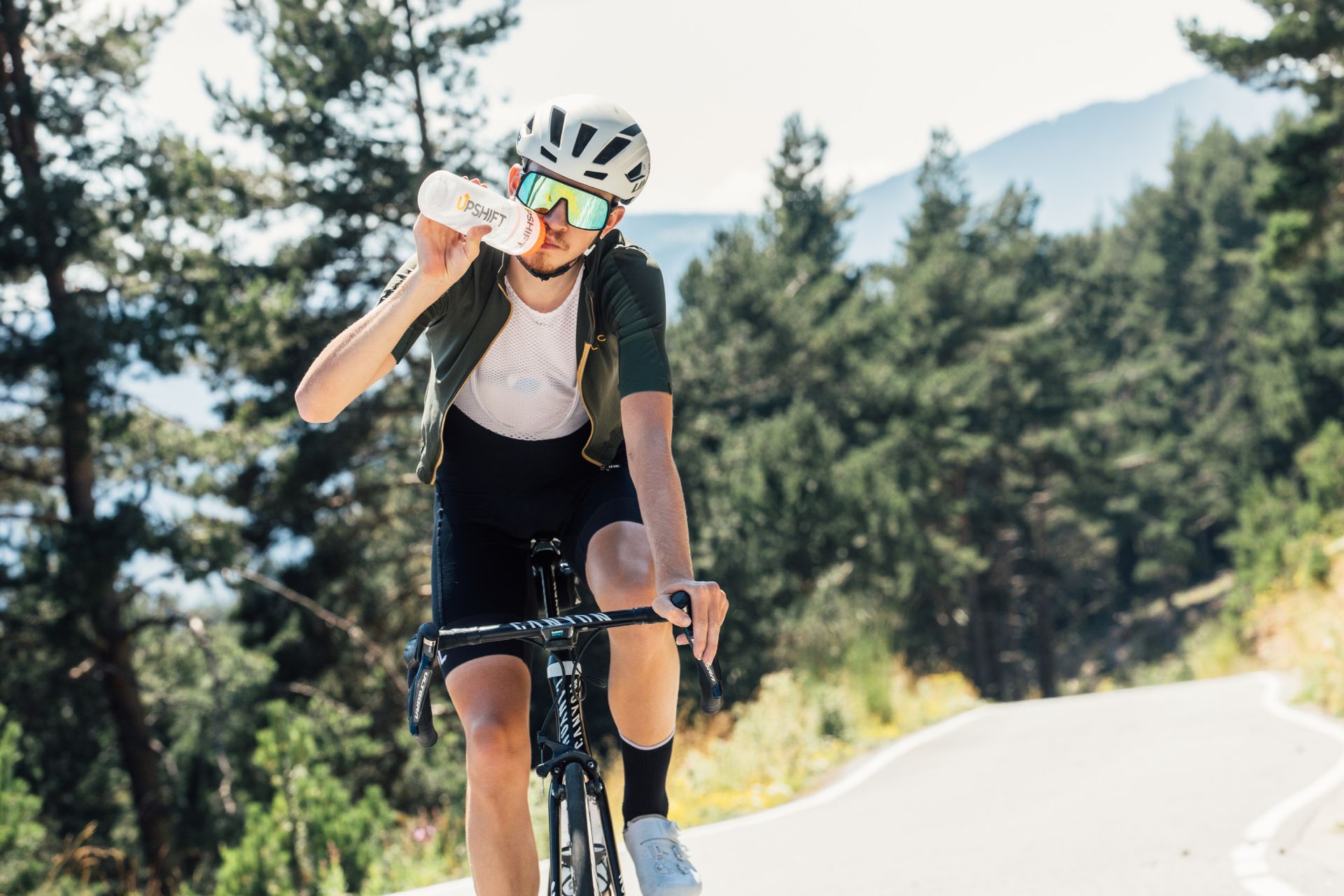
Most cyclists will be pretty accustomed to taking electrolyte drinks and tablets.
Electrolytes are salts and minerals - sodium, chloride, potassium, magnesium, calcium, phosphate and bicarbonate.
They're lost through sweat, which is something most athletes do a lot of during exercise. Dehydration and loss of electrolytes can result in a drop in performance, so it's crucial to replace them.
Though data from studies doesn't quite stack up, there's an overwhelming amount of anecdotal evidence pointing towards the conclusion that low levels of sodium can result in thecrippling grasp of cramp.
Most sports drinks contain about 200mg of sodium per dose, but the amount you need depends upon the salt content of your sweat and how much sweating you do. Drinks by specialist brandPrecision Hydrationcontain up to 1,500mg per serving and could be a solution for people who suffer with cramp and fatigue associated with loss of sodium.
9. Fish oils

This one is less a 'supplement for cyclists' than it is a 'supplement to support general health'.
The World Health Organization (WHO) recommends people eat one or two portions of fish a week to contribute to general health.
Fatty fish contains Omega-3 fatty acids which has been linked to the reduction of inflammation, joint and bone health, and improved immunity. You can get it via eating fish, or you can take a daily capsule to ensure you get enough.
Another supplement related to joint health is Glucosamine - which is linked to maintaining healthy cartilage and connective tissue and preventing injury, and some cyclists take it tobeat keen paincaused bypressure on the patella(knee cap).
Last word
Most nutritionalists will agree that it's entirely possible to meet all of your needs through 'real food', and this is often the best method. In some instances, supplements may help you to meet targets that can be overlooked under the pressures of a busy lifestyle.
If you do decide to incorporate one of these well researched supplements into your diet, do ensure it's coming from a reliable brand - check the label before you load up your innocent kale smoothie, you don't want to become the next beef steak doping victim.
Bean says: “If you are subject to anti-doping rules, then make sure that your supplements come from a reputable company that provides a certificate to prove it has been batch-tested for banned contaminants by a recognised sports anti-doping lab. Look for the Informed Sport logo on the label and check the batch number on the Informed Sport website,” she says.

Thank you for reading 10 articles this month* Join now for unlimited access
Enjoy your first month for just £1 / $1 / €1
*Read 5 free articles per month without a subscription

Join now for unlimited access
Try first month for just£1 / $1 / €1
Michelle Arthurs-Brennan is a traditional journalist by trade, having begun her career working for a local newspaper, where highlights included interviewing a very irate Freddie Star (and an even more irate theatre owner), as well as 'the one about the stolen chickens'.
Previous to joining thebeplay手机客户端下载team, Michelle was Editor at Total Women's Cycling. She joinedCWas an 'SEO Analyst', but couldn't keep her nose out of journalism and in the spreadsheets, eventually taking on the role of Tech Editor before her latest appointment as Digital Editor.
Michelle is a road racer who also enjoys track riding and the occasional time trial, though dabbles in off-road riding too (either on a mountain bike, or a 'gravel bike'). She is passionate about supporting grassroots women's racing and founded the women's road race team 1904rt.
Michelle is on maternity leave from July 8 2022, until August 1 2023
-
-
 Do you know your carbs? Current carb recommendations misidentified by over half of endurance athletes, study finds
Do you know your carbs? Current carb recommendations misidentified by over half of endurance athletes, study findsCarb-loading proved a particular knowledge gap - check out how you’d stack up in the study’s questionnaire
By Anna Marie Abram •Published
-
 Tour de France stage 6 LIVE: Can Tadej Pogačar take back time on the Tourmalet?
Tour de France stage 6 LIVE: Can Tadej Pogačar take back time on the Tourmalet?The second mountain stage of the Tour de France is a chance to challenge Jonas Vingegaard and yellow jersey Jai Hindley
By Vern Pitt •Last updated
-
 Five nutrition questions answered by an Ineos Grenadiers expert
Five nutrition questions answered by an Ineos Grenadiers expertWe put some hot fuelling topics to Dr Marc Fell, performance nutritionist for Ineos Grenadiers
By Sponsored •Published
-
 Eating for optimal recovery
Eating for optimal recoveryHow INEOS Grenadiers use Science in Sport to fuel their recovery
By Sponsored •Published
-
 What to drink when cycling - the liquids you need on the bike
What to drink when cycling - the liquids you need on the bikeNot all liquid is created equal - we explain the different types of fluid that'll help you ride further
By Luke Friend •Published
-
 Ask a cycling coach: 'I’m over 40, what is a good VO2 max for my age?'
Ask a cycling coach: 'I’m over 40, what is a good VO2 max for my age?'VO2 max measures how much oxygen your body can utilise in a minute - but how does yours compare to the average, and does it matter?
By James Spragg •Published
-
 Performance fuelling for time-trials.
Performance fuelling for time-trials.How INEOS Grenadiers use Science in Sport to fuel a Grand Tour stage when every second counts
By Sponsored •Published
-
 Fuelling for the mountains
Fuelling for the mountainsHow INEOS Grenadiers use Science in Sport to fuel a Grand Tour
By Sponsored •Published
-
 Should cyclists care more about chemicals in sports nutrition?
Should cyclists care more about chemicals in sports nutrition?With so much information now available about sports nutrition, how can athletes make sense of what’s best for them? We chat with two brands and a registered dietitian to get to the bottom of what formulas make sense and why
By Kristin Jenny •Published
-
 Are these six common sports nutrition rules fact or fiction?
Are these six common sports nutrition rules fact or fiction?By Adam Becket •Published
